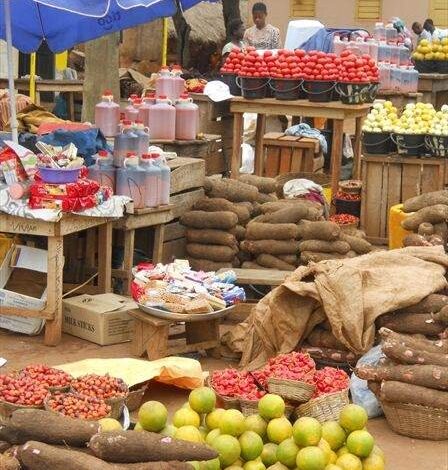Food prices swing in Accra markets… Survey shows complex picture of scarcity, abundance, shifting consumer preference

Food prices across major markets in Accra continue to fluctuate, with some staples recording steep price hikes while others are experiencing sharp declines. The situation has left both traders and consumers struggling to adapt and plan their daily, weekly, and monthly groceries.
A market survey by The Ghanaian Times at Agbogbloshie, Kaneshie, and Anyaa markets between September 25 and 30, 2025, revealed a complex picture of scarcity, abundance, and shifting consumer preferences.
At Agbogbloshie, one of the capital’s busiest food hubs, prices of essentials such as tomatoes, onions, yam, and imported rice have seen steep rises in recent weeks. A box of tomatoes, which sold for GH¢800 in early August, now goes for between GH¢1,200 and GH¢1,500, while a bag of onions imported from Niger has jumped from GH¢900 to over GH¢1,300.

According to Ms. Abigail Frimpong, a tomato seller of 10 years, they were struggling due to the lack of consistency in the prices of tomatoes. “We are struggling because customers are complaining every day. When prices rise, people buy less, and sometimes the goods spoil before I can sell them all.”
Similarly, some consumers shared the same frustrations. Mrs. Judith Shine Quashie, a mother of four, said the same money she spent two months ago now buys less than half of her family’s needs, adding that “Planning has become very difficult,” she noted.

But the story is different at Anyaa Market, where seasonal crops are in abundance. Tomatoes, which are now in season, are being sold at GH¢350 per basket, down from a previous high of GH¢600, while a bag of onions, which peaked at GH¢3,000 earlier this year, now costs between GH¢1,000 and GH¢1,500.
“Prices will definitely rise again as we approach December,” warned Ms. Ellen Wemegah, a trader. Yams, meanwhile, remain costly at GH¢25 per tuber, with farmers blaming irregular rainfall for low harvests.
At the Kaneshie Market, another major trading hub, the situation is one of mixed trends as prices of gari and rice have fallen marginally, offering some relief to consumers. An “olonka” of gari, which used to sell at GH¢35 same period last year, now goes for GH¢30, while a five-kilogramme bag of rice has dropped from GH¢110 to GH¢90.

“When prices are low, everyone benefits,” said Adjoa Serwaa, a gari retailer, adding that “Customers eat well, and we also make money because sales move quickly.” Consumers say the reduction is easing household pressures. A mother of three told The Ghanaian Times that she can now buy extra rice for her children and still save money. “It may look small, but it helps the family budget,” she added.
Beyond prices, consumer behaviour is also shifting. Traders at Kaneshie report that shoppers are increasingly favouring imported rice over local varieties, despite improvements in quality. Madam Bridget, a rice seller, explained that many buyers prefer foreign rice because it looks cleaner and cooks better. “Even when local rice is cheaper, some customers won’t buy it,” she said.
The traders have, therefore, called on government to step up interventions, including subsidising fertilisers, supporting mechanisation, reducing fuel costs, and improving storage systems. “Without proper measures, food prices in Ghana will remain unstable,” they cautioned, adding that “The relief we see today in gari and rice may not last beyond the next farming season.”
BY ELIZABETH KPORSU, CHELSEALINA ASANTE, CHRISTABEL D. ANKRAH, SARAH KWAKYE & HERTY BROWN
🔗 Follow Ghanaian Times WhatsApp Channel today. https://whatsapp.com/channel/0029VbAjG7g3gvWajUAEX12Q
🌍 Trusted News. Real Stories. Anytime, Anywhere.
✅ Join our WhatsApp Channel now! https://whatsapp.com/channel/0029VbAjG7g3gvWajUAEX12Q






